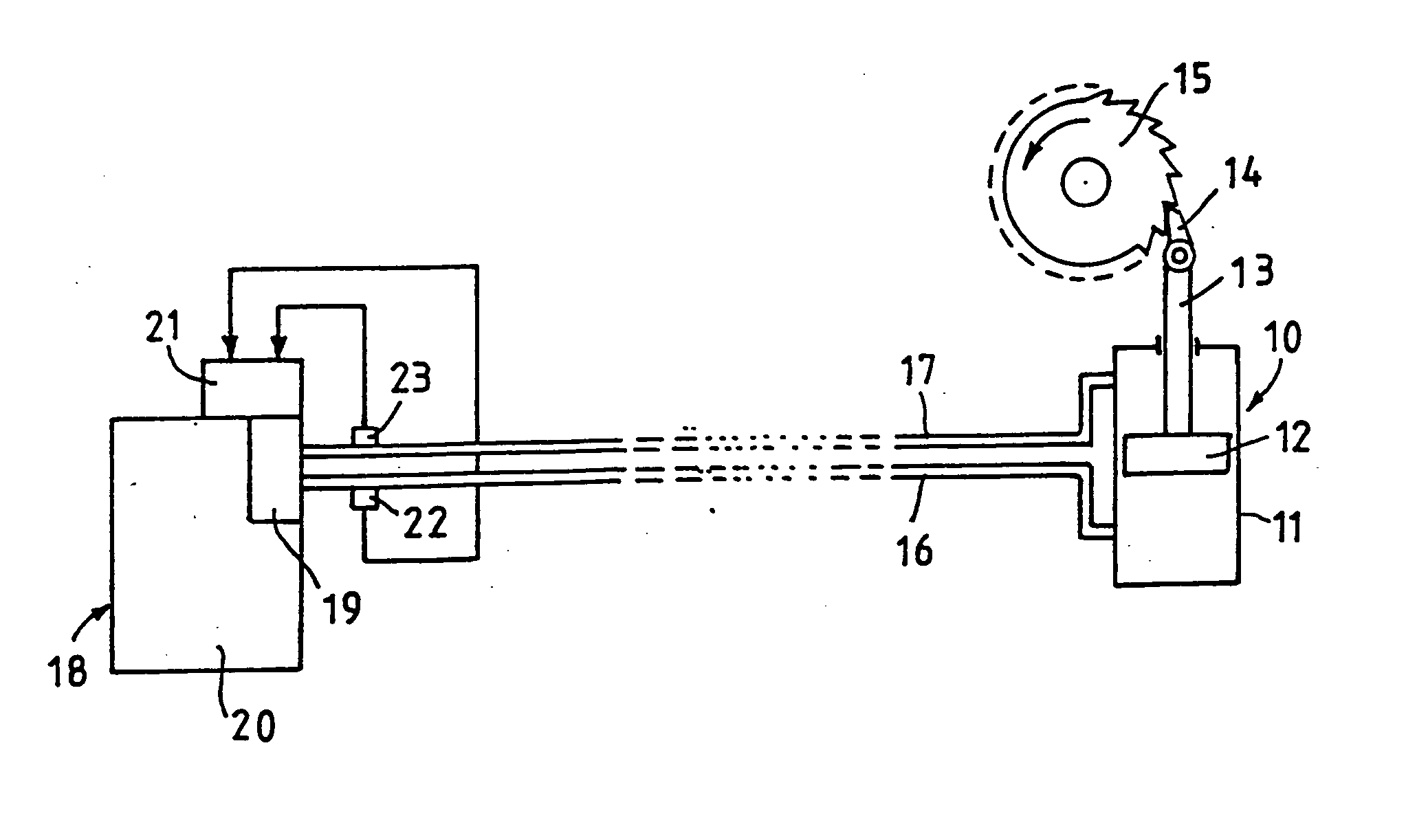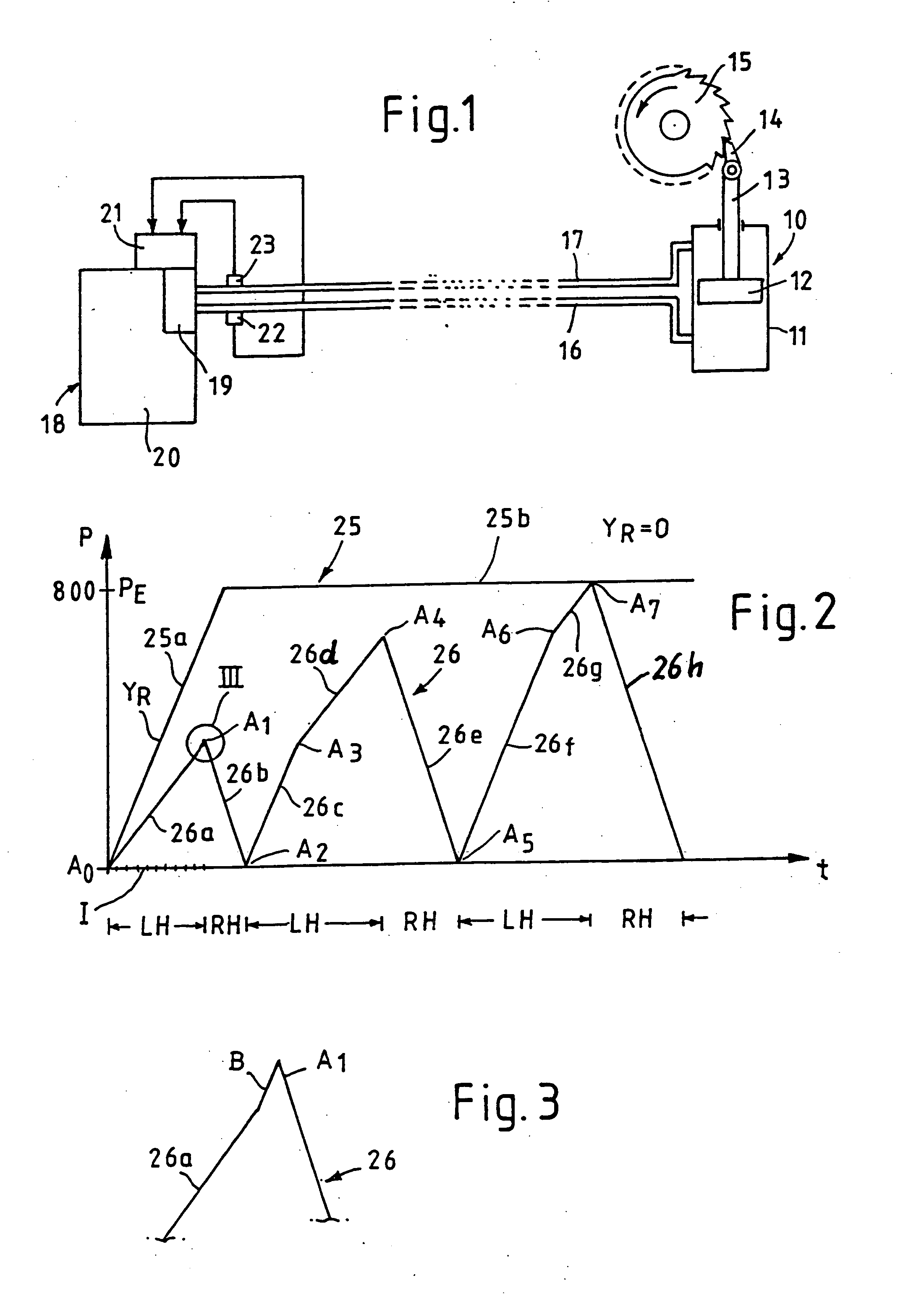Method for controlling a hydraulic piston/cylinder unit
a hydraulic piston and cylinder technology, applied in the direction of fluid couplings, gearings, servomotors, etc., can solve the problems of insufficient security of working operations, difficult in practice, and failure to detect the end of a working operation, so as to avoid unnecessary idle times, fast detection of the end position, and the effect of pressure build-up in the hydraulic lin
- Summary
- Abstract
- Description
- Claims
- Application Information
AI Technical Summary
Benefits of technology
Problems solved by technology
Method used
Image
Examples
Embodiment Construction
[0018] The embodiment of the invention described below is a hydraulic power wrench serving to tighten screws, wherein a desired terminal torque is reached. Such a power wrench includes a hydraulic piston-cylinder unit 10 with a cylinder 11 and a piston 12 movable within the cylinder. The piston 12 is connected to a piston rod 13. A ratchet lever 14 is provided at the end of the piston rod 13, engaging the toothing of a ratchet wheel 15. The reciprocating movement of the piston rod 13 intermittently turns the ratchet wheel 15 in the direction of the arrow. The ratchet wheel 15 is coupled to a socket wrench (not illustrated) that is set on the screw head to be turned. The screw is turned by the reciprocating movement of the piston 12.
[0019] Hydraulic lines 16, 17 connect the two cylinder spaces of the cylinder 11 to a hydraulic pressure aggregate 18 including a switching valve 19. By means of the switching valve 19, each of the hydraulic lines 16, 17 can alternately connected to a pr...
PUM
 Login to View More
Login to View More Abstract
Description
Claims
Application Information
 Login to View More
Login to View More - R&D
- Intellectual Property
- Life Sciences
- Materials
- Tech Scout
- Unparalleled Data Quality
- Higher Quality Content
- 60% Fewer Hallucinations
Browse by: Latest US Patents, China's latest patents, Technical Efficacy Thesaurus, Application Domain, Technology Topic, Popular Technical Reports.
© 2025 PatSnap. All rights reserved.Legal|Privacy policy|Modern Slavery Act Transparency Statement|Sitemap|About US| Contact US: help@patsnap.com


